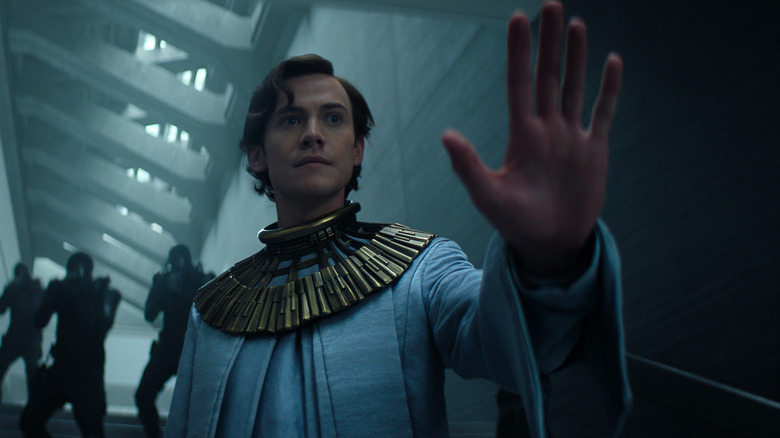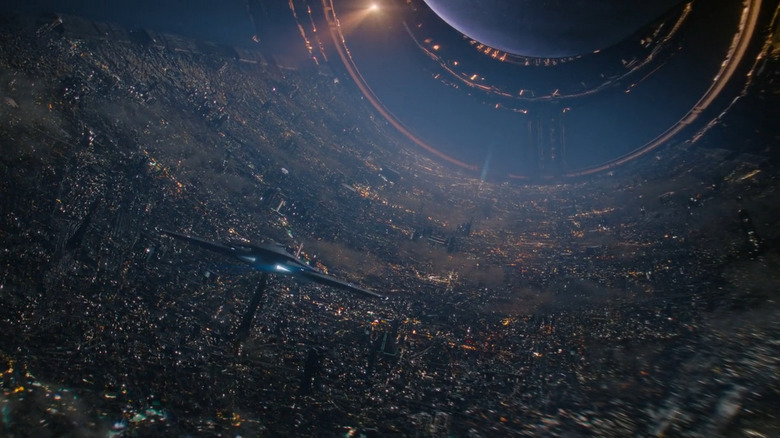
"Foundation" is a phenomenal work of sci-fi and one of the best shows on AppleTV, or generally on the air currently. It takes a work that was considered unadaptable, a dense work of fiction with a vast scope but not much action, and turns it into a blockbuster that balances fun with deeper philosophical talks and themes — kind of Denis Villeneuve's recent adaptation of "Dune."
Based on Isaac Asimov's hugely influential book series of the same name, "Foundation" is a saga about the fall of the Galactic
Empire. People scattered throughout the galaxy attempt to prevent humanity from falling into a dark age after the end of Empire by establishing a foundation to preserve knowledge. For three seasons, we've followed the Foundation as it grew from a small group of people to a legitimate threat to the Empire, while a mysterious pirate named The Mule began a conquest that could destroy both Empire and Foundation.
Part of what makes this show so fascinating is how expansive it is. "Foundation" brings Asimov's other sci-fi stories into its universe and expands the scope of the story by several thousand years, while simultaneously exploring complex ideas about the meaning of self, humanity, sentience, and paradoxes. But as dense as the show is, it is also just visually stunning. Case in point, the look of the seat of the galactic council, Clarion Station, which takes inspiration from a cool tradition in sci-fi: the O'Neill cylinder.
Read more: 10 Best Sci-Fi Books Of All Time, Ranked
A Perfectly Sci-Fi Design

The O'Neill cylinder is a concept proposed by Gerard K. O'Neill, a physicist and space activist who developed a plan through which humans could build settlements in space. The titular cylinder is a space settlement made out of two cylinders rotating in opposite directions, which would make it so they can always be aimed toward the sun, while the rotation provides artificial gravity.
O'Neill was not the first one to come up with such an idea. Arthur C. Clarke thought of an alien-made cylinder in "Rendezvous with Rama," while Larry Niven came up with a similar idea (but larger-scale) in his sci-fi novel "Ringworld," which turned into a very influential series of novels. But O'Neill's 1976 book "The High Frontier: Human Colonies in Space" cemented in reality what sci-fi authors had previously only dreamed of.
The concept of a cylinder-shaped space settlement became a popular trope in science fiction. "Babylon 5" and "The Expanse" did it, as did "Interstellar" and the popular video game trilogy "Mass Effect" (Clarion Station is basically The Citadel). Still, you could argue that the O'Neill cylinder is most closely associated with the "Mobile Suit Gundam" anime franchise as the many, many, many space colonies in the franchise (which tend to be dropped straight into Earth as a military tactic with devastating power) all follow this design.
It's a distinct and unique look that immediately screams sci-fi while still being realistic enough to be used even in the most grounded of sci-fi stories. That "Foundation" is using this design just speaks to the balance between grounded and more fantastical and alien sci-fi in the show — for another example, look at the Visi-sonor.
If you're looking for the easiest way to keep up with all the major movie and TV news, why not sign up to our free newsletter?
Read the original article on SlashFilm.










